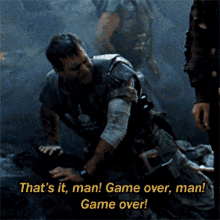
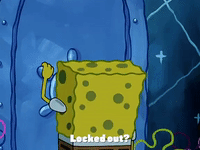
Incredibly, this month marks twenty years since the 2004-05 lockout began. As a refresher, NHL teams were spending far more of their revenues on player salaries than they wanted to be, so they wanted to institute a salary cap in an effort to, basically, control themselves. The players naturally didn’t want that as it would limit their earning potential, so they fought against it. On September 16, 2004, the players were locked out and the loggerheads would go unresolved until the following July, killing the 2004-05 season. Eventually the two sides would come to an agreement on July 22, 2005, and a salary cap was set at 54% (now up to 57%) of the League’s total revenue. Concurrently a salary floor was also instituted, requiring every team to pay a certain amount of their revenue towards salaries (which is 30% less than the salary cap). Individual players also cannot have too high a salary.

One underappreciated aspect of this salary cap/floor system is the NHL’s quest for parity. In sports, the spirit of parity is that every team in a league is generally seen as equal; i.e. for any given season, every team has a chance to succeed. Of course, the reality is that some teams are successful for stretches, and the opposite is true as well. How the salary cap plays into this is by preventing successful teams from hoarding too many skilled players, forcing them to disburse players they may not be able to afford. At the same time, the weaker teams will typically improve slowly via the draft and being able to use cap space to buy free agents. Ultimately, on a long enough timeline, every team should have its day in the sun, so to speak, and conversely every team will have its day in the basement as well. Thus, parity does come, but often over the course of several years, if at all. So when teams do win the Stanley Cup, it’s interesting to observe how long it’s been since that team was last at its highest point and also when it was at its lowest.

For the Florida Panthers, this past summer’s championship came as the culmination of five straight years in the playoffs and two straight Conference Finals appearances, but it also came ten years after taking a top four pick in the Entry Draft in four out of five years. From 2010 to 2014 they picked third (Erik Gudbranson), third (Jonathan Huberdeau), twenty-third (Mike Matheson), second (Aleksander Barkov), and first (Aaron Ekblad). Of those five, only Ekblad and Barkov are still with the team, but the most recent departure may have been the most crucial one, with Huberdeau being sent to the Calgary Flames along with a first round pick, Mackenzie Weegar and Cole Schwindt in exchange for Matthew Tkachuk and a fourth round pick. It was a savvy move by Panthers general manager Bill Zito to snatch up Tkachuk, four years younger and about as productive as Huberdeau while also having a more physical edge to his game. Tkachuk ended up tied in points with Barkov, the Conn Smythe winner, while suffering with a 7.2% shooting percentage.

The team they beat in the Cup Finals, the Edmonton Oilers, are still waiting for their years toiling in the mines of the Western Conference to hit paydirt. After losing in the Stanley Cup Finals in the first post-lockout playoffs, the Oilers were worst or second-worst in their division ten out of the next thirteen seasons, all the way up to 2019. As a result they racked up eleven first round picks including six in the top four. Half of those players are no longer with the team, but two of the remaining players, Connor McDavid and Leon Draisatl, are amongst the most productive players in the NHL. Yet, year after year, Edmonton struggles to achieve their ultimate goal for various reasons, whether their goaltending flakes out, their depth fails to show up, or (in the case of this past Cup Finals with Draisatl and his three points in seven games) someone doesn’t perform as well as they need to. The good news for the Oilers is that their roster stayed roughly the same this offseason; the bad news is that the clock is ticking louder, with Draisatl’s contract expiring after this coming season and McDavid’s in two years. (Author’s note: Draisatl extended his contract last week, so…the point still remains that the salary cap will inevitably squeeze every team to the point where they can not afford enough quality players.)

It’s not a perfect system, the idea that being bad for several years will eventually lead to success, but it is noteworthy that teams which make high-end draft picks do tend to become Conference Finalists or better generally within five years. It is also worth pointing out that teams don’t often become Conference Finalists if they don’t make high-end picks. Since the lockout, only five teams haven’t made it to the Conference Finals: Calgary, Columbus, Minnesota, Seattle, and Toronto. Of those five, the Wild (2005, Benoit Pouliot) and the Flames (2014, Sam Bennett) have made just one top four pick in the last twenty seasons, and both of those picks were disappointments. The Blue Jackets are lurking in the depths, but their time is coming soon. Like a normal expansion team, the Kraken are just getting started. That leaves the Leafs, still struggling to make the breakthrough into the final four. Like their peers in Edmonton (that is, prior to Draisatl’s extension last week), they too have a key player whose contract is expiring after this season (Mitch Marner), so they are likely hoping that their fortunes improve dramatically, and soon.

Two teams waiting for their prospects to finally lead their teams to success, presumably with increasing anxiety, are the Buffalo Sabres and the New Jersey Devils. Both teams have made four top-four picks in the last ten summers, the most in the NHL. Both teams have made two first overall selections (Rasmus Dahlin and Owen Power for Buffalo, Nico Hischier and Jack Hughes for New Jersey). Both teams are hoping their promising young goaltenders (Buffalo: Ukko-Pekka Luukkonen; New Jersey: Nico Daws) will live up to expectations soon, especially with veteran backups (James Reimer for the Sabres, Jacob Markstrom or Jake Allen for New Jersey) that are long in the tooth and of questionable ability. Both teams will need to stay healthy if the conditions are to stay optimal for their respective returns to the postseason. I feel like the Devils have more hope to make the playoffs as, on paper, they appear to be one of the top three teams in the Metropolitan Division. The Sabres on the other hand have to contend with an Atlantic Division that has the reigning Stanley Cup champions (Florida), one not long removed from their last Cup (Tampa Bay), one desperate to make that big leap (Toronto), and a host of others vying to show that they to are good enough to make the playoffs this year.
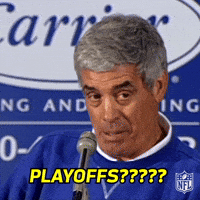
I’ll leave this section by reiterating the bigger overall picture: since the 2004-05 lockout, practically every team has been near or at the very top and the very bottom, and that is by design. It’s a slow process, that ascent and descent, something like riding rolling waves in the middle of the ocean. Sometimes those crests are persistently high (like they were for the Tampa Bay Lightning from 2015-2022), sometimes the lows are persistently low (like they were for the Edmonton Oilers from 2010-2016). Sometimes the ocean is nice and placid, which is where this analogy falls apart because flat and easy sounds nice for a cruise but won’t get you anywhere in the NHL (see Calgary, Minnesota right now). It’s when teams have those lows that, more often than not, they eventually end up achieving the highs. That’s what we’ve seen with Tampa and Edmonton, it’s what we’re starting to see with the Rangers and Toronto, and it stands to reason that we’ll see it with New Jersey and Buffalo soon as well. And, before long we’re going to see the opposite, once again, for teams like ours in Pittsburgh.
Alright, let’s get to my division-by-division summaries and predictions!

Last season, the Pacific Division saw its third straight season with a different team leading the pack by the end of the year with the Vancouver Canucks surprising most people with a hot start that allowed them to coast their way to their first division title since 2013. However, a knee injury to Vezina runner-up Thatcher Demko in March really threw a wrench in their works and they were dispatched in the second round of the playoffs by the eventual Stanley Cup runners-up and division rivals, the Edmonton Oilers. Demko is still rehabbing from that knee injury and is reportedly going to be unavailable for training camp, the preseason, and perhaps the start of the regular season. If Demko is not ready to go, the Canucks will hope Arturs Silovs can hold things together until the starter returns. As long as Demko is not out of the lineup for long, Vancouver’s hopes to make a deeper playoff run shouldn’t be harmed too much. Besides that, both the Oilers and Canucks are still well built and have their sights on the Conference Finals.
As I noted above, the Oilers will be exceptionally desperate to get a Stanley Cup for Connor McDavid before they run into salary cap hell. If it doesn’t look like Edmonton will seriously contend for the Cup, McDavid may not be with the Oilers beyond next season, so I really think they’ll be pushing hard to get back to the Stanley Cup Finals. The Los Angeles Kings and Vegas Golden Knights should still be in third and fourth, respectively, but they both have taken steps backwards in roster quality this past offseason, and now they both risk falling into the mediocrity trap. I wouldn’t be surprised to see Seattle scoot past one of those teams and into a playoff spot. Calgary is absolutely in mediocrity hell and there’s little hope of getting out until Anaheim and San Jose climb over them and force them into a rebuild in the Pacific Division basement. In fact I am going to gamble and say the Sharks surpass the Ducks this year.
- Edmonton Oilers
- Vancouver Canucks
- Los Angeles Kings
- Vegas Golden Knights
- Seattle Kraken
- Calgary Flames
- San Jose Sharks
- Anaheim Ducks

The Central Division looks to be increasingly chaotic and I’m here for it. Last season’s division winners and Conference Finalists, the Dallas Stars, saw some major roster turnover including the retirement of captain Joe Pavelski. Defensively they’re looking pretty dubious with Matt Dumba and Ilya Lyubushkin as their #1 and #2 right-handed defensemen. Jake Oettinger might have to turn in a Vezina-caliber season if they’re to maintain their place at the top of the division. Behind them is a logjam of five, possibly six, teams jockeying to make the playoffs, but second place will probably belong to the Colorado Avalanche, who overtake the Winnipeg Jets mostly thanks to the Jets making downgrades across the board while the Avalanche stay mostly the same.
In fact, Winnipeg’s offseason degradation may see them fall out of the playoff race altogether, with St. Louis making marginal improvements but especially the Utah Hockey Club (née Arizona Coyotes) making big improvements and looking to make the playoffs in their first year in Salt Lake City. I don’t trust the Minnesota Wild much since they’ve been stuck in mediocrity for years, and now I think they’ve positioned themselves to tumble towards the bottom of the division, especially if the Chicago Blackhawks surprise and make a bigger step forward than expected.
- Dallas Stars
- Colorado Avalanche
- Nashville Predators
- Winnipeg Jets
- Utah Hockey Club
- St. Louis Blues
- Minnesota Wild
- Chicago Blackhawks
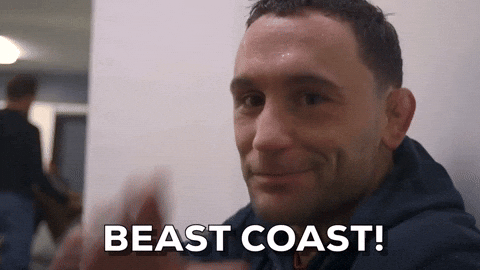
Since the lockout, teams that win the Stanley Cup have gone back to the Conference Finals just six times: Detroit in 2008-09, Los Angeles in 2012-13, Chicago in 2013-14, Pittsburgh in 2016-17, and Tampa Bay from 2020-22. The one thing these teams have in common is that their rosters stayed largely unharmed by the typical offseason departures. The Florida Panthers, the reigning Stanley Cup and Eastern Conference champions, took the typical step back in the offseason with the departures of Brandon Montour, Oliver Ekman-Larsson, and Vladimir Tarasenko and their replacements probably aren’t going to make up enough of that lost production. More damning for Florida perhaps than the introductory note is the other team since the lockout went from Stanley Cup runners-up to champions the following year, the Pittsburgh Penguins in 2009, did not make it to the final four at all for another four years. So while I’m not saying the Panthers will not be in the discussion for the Conference Finals or better again this season, the odds are definitely not in their favor.
Like their peers in Edmonton, the time to strike is likely now or never for the Toronto Maple Leafs. All of their departures were replaced by more productive players, and it’s the last year of the contracts of John Tavares and Mitch Marner, so it stands to reason that they’ll be much improved and probably enough so to end up first in the division. After Florida, there are four teams going in different directions in terms of their rosters’ ages: Tampa Bay and Boston are heading towards the end of their times in the sun, while Detroit and Buffalo are looking to start theirs. I think the Lightning made the right moves in the offseason to keep themselves in playoff contention (particularly replacing Steven Stamkos with Jake Guentzel), but the Bruins are going to finally fall out of the playoffs and get replaced by the Sabres. The Red Wings might find themselves being embarrassed by falling behind an Ottawa Senators team that may surprise with Linus Ullmark now as their starting goalie, and I don’t think the Montreal Canadiens are long for catching back up with everyone as well.
- Toronto Maple Leafs
- Florida Panthers
- Tampa Bay Lightning
- Buffalo Sabres
- Boston Bruins
- Ottawa Senators
- Detroit Red Wings
- Montreal Canadiens
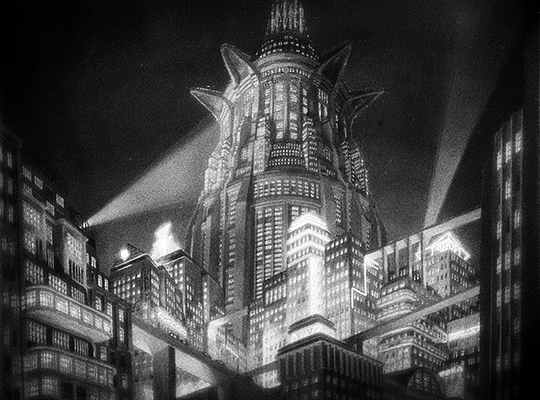
There could be more upheaval in the Metropolitan Division than meets the eye. The Rangers may still be #1 in the division, but they’re going to be chased by a much-improved New Jersey Devils team that has been scuffling for longer than they should be. The Devils brought in Brett Pesce and Brenden Dillon to augment their blue-line, and Jacob Markstrom is an upgrade in goal as well. I think this is the year they finally start living up to expectations and I would peg them as second in the Metro for now. Meanwhile Carolina has downgraded a lot this offseason and with the Islanders and particularly the Capitals making upgrades this summer, it’s not as much a lock to pencil the Hurricanes into a playoff spot as it has been for the past several years.
I’ll get further into depth on the Penguins in the near future, but they don’t strike me as a playoff team with at least the Rangers, Devils, Capitals and Hurricanes ahead of them, and possibly the Islanders and maybe even the Flyers. It really depends on everything going their way, and that’s a lot to rely on. It won’t be long for Columbus to get itself out of the Metro Division basement, but (especially in light of the tragic death of Johnny Gaudreau) it won’t be this year.
- New York Rangers
- New Jersey Devils
- Washington Capitals
- Carolina Hurricanes
- New York Islanders
- Pittsburgh Penguins
- Philadelphia Flyers
- Columbus Blue Jackets
